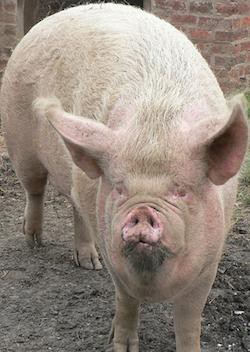Which Meat Will You Miss the Most?
Which Meat Will You Miss the Most?

A butterfly flaps its wings in New Mexico, a lime crisis ends, a meat crisis begins:
The cost to produce a BLT, America’s favorite summer sandwich, hit a record high of $1.65 in May and will continue to take a bigger bite out of wallets in the coming months, given a pig virus that has ramped up bacon prices and drought-stricken salad crops in California.
Kind of a strange way into a story about record-high pork belly prices, but sure. It’s a BLT crisis! Chicken prices are skyrocketing, too, for entirely different reasons:
“We fed him too much. He got fat. When he got big, he did not breed as much as he was intended to,” Cockrell said about the breed of rooster. “The fertilization went way down, and our hatch has been way down.”
And then beef, what’s the problem with beef?
The scramble shows how a prolonged drought in the southern U.S. Great Plains that has shrunk the nation’s cattle supply to six-decade lows is rippling from slaughterhouses to drive-ins and high-end steakhouses.
But beef derivatives are out of control, which is a good sign:
After making an all-time high early Monday morning, cattle prices reversed sharply lower as cattlemen began bringing cattle to the market to capture record high prices. Meanwhile, traders cashed in on huge profits, after riding the market higher for months. As prices dropped, ranchers and traders seemed to succumb to herd behavior, with aggressive selling leading to even more selling.
During the week, prices fell so fast that the Chicago Mercantile Exchange’s limits were triggered multiple times, which prevent prices from dropping more than three cents per day. By Friday, the bloodbath seemed to be slowing down, but left the markets severely wounded, with fat cattle having shed over nine cents per pound and feeders losing nearly twelve cents, finishing near $1.47 and $2.08, respectively.
“The bright side of this price drop is for consumers, grocery stores, and restaurants, who may benefit from cheaper beef,” the story says. Cheaper food, in a story about our food supply: that is what is known now as “the bright side.”
None of this really amounts to much for now; these meat price stories are amplified by the fact that there are complex financial arrangements around them. But it’s a fun rehearsal, at least, and one that we will repeat many many times, before the real future gets here.
